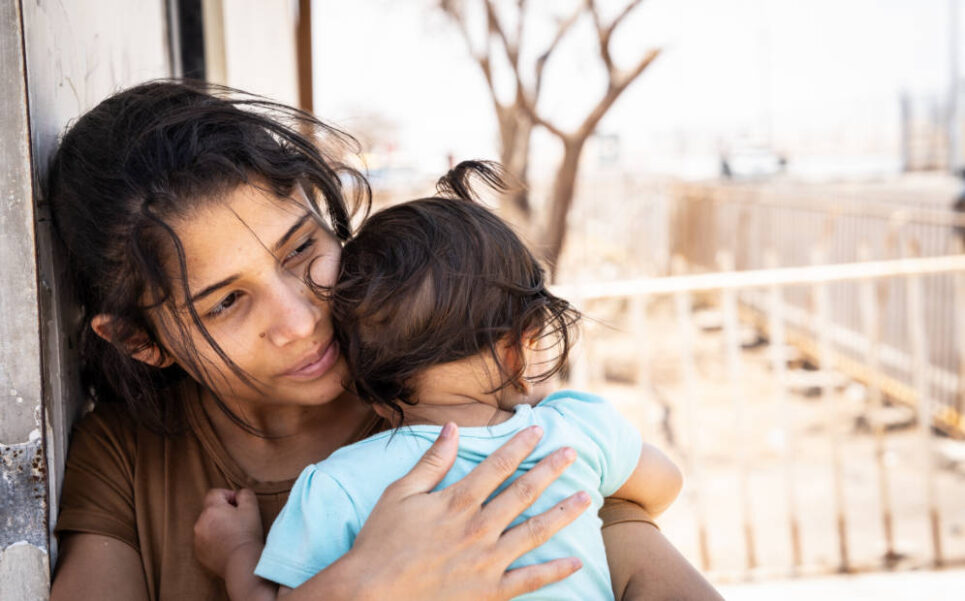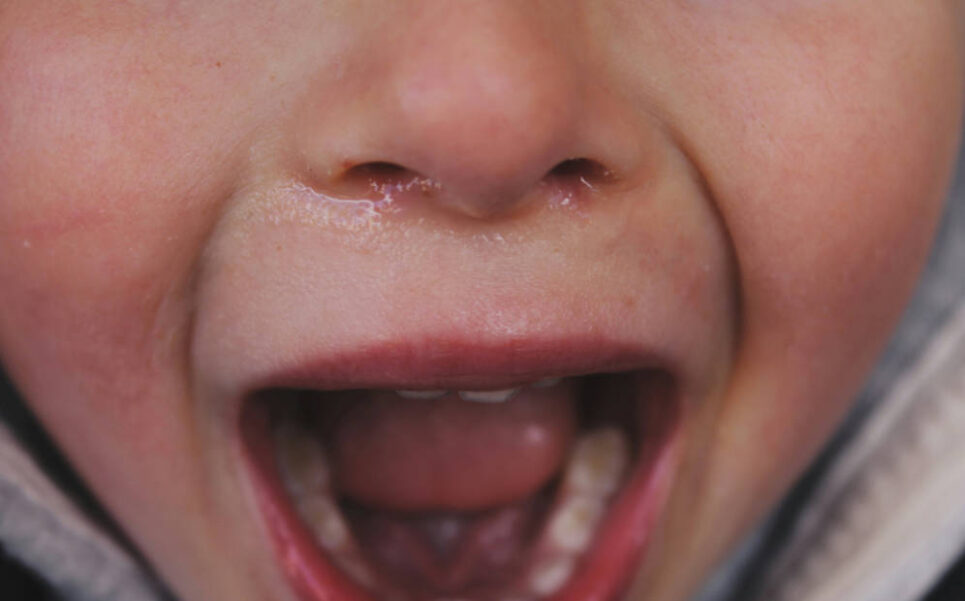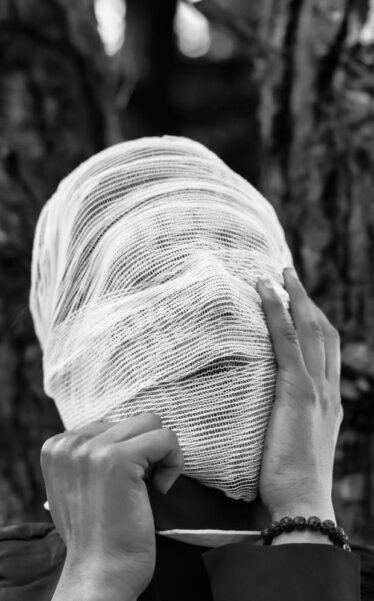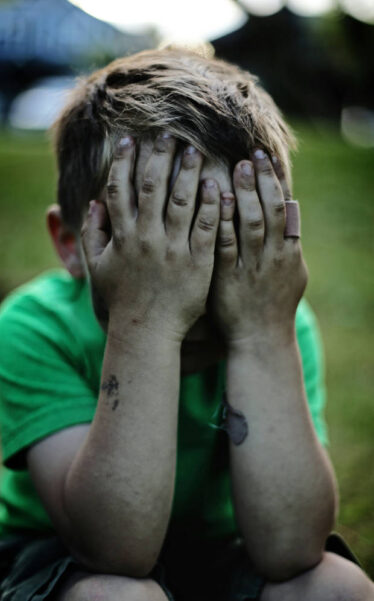Trafficking victims’ support is an urgent and ongoing priority in Colombia, where child trafficking and sexual exploitation continue to affect thousands of minors. This often-silenced crisis demands exposure, understanding, and concrete action. Across the country, organizations are working to provide support for victims of trafficking, offering comprehensive care and leading efforts to prevent future cases.
To better understand how this crime is being addressed, we interviewed Fundación Renacer, a pioneering organization dedicated to the defense and protection of victims. Fundación Renacer operates throughout Colombia, focusing on support for victims of trafficking. Their mission includes prevention, psychological and social support, and community-based campaigns to protect those most at risk.
The Reality of Trafficking Victims in Colombia
Support for victims of trafficking in Colombia faces a hidden and ongoing reality. Trafficking thrives on structural poverty, social inequalities, armed conflict, and migratory dynamics. It evolves and disguises itself, mainly affecting girls, adolescents, and women, the most vulnerable populations.

We must take a moment to emphasize that the Colombian armed conflict is a war that has been taking place in Colombia since the 1960s and continues to this day. The main actors in this conflict are: the Colombian state, far-left guerrilla groups, and far-right paramilitary groups. In addition, drug cartels, so-called criminal gangs, and organized armed groups have joined the conflict.
Continuing with the issue of human trafficking, recent figures reveal a worrying situation.
According to Colombia’s Ombudsman’s Office, 191 human trafficking cases were reported during the first half of 2024. Alarmingly, 76.5% of these cases were for sexual exploitation. Compared to the same period in 2023, reports increased by 139%.
But the situation goes beyond numbers.
In 2024, the Ombudsman’s Office directly supported over 150 cases. More than 80% of the victims were girls, adolescents, or adult women. In Antioquia, sexual violence against minors has grown alarmingly. Over 18 months, 617 reports of child sexual exploitation were recorded — 480 of them in 2023 alone.
The Colombian Institute of Family Welfare (ICBF) has also raised red flags.
In January 2025 alone, 1,072 cases of child sexual abuse were reported — an average of 35 children abused per day. Between January and March, 4,375 administrative processes were opened to restore victims’ rights. A staggering 85% of those affected were girls.
These figures reveal a deep wound and an urgent call for justice.
It is important to note that since 2013, the Ministry of the Interior has been recording the places of origin and destination of the victims, and the following information is found in the reports from its Human Trafficking Crime Observatory:

In most cases (external trafficking), the victims recruited for exploitation outside the national territory come from Antioquia, the Coffee Region (Eje Cafetero), Bogotá, Valle del Cauca, as well as refugees and migrants currently in Colombia. Although there are records showing that these victims are transferred to and exploited in 52 different countries, the most frequently reported destination is China, followed by Mexico, Spain, Argentina, and Ecuador.
Similarly, in cases of internal trafficking, most victims come from Antioquia and Bogotá and are primarily exploited within Colombia’s capital city.
Regarding foreign nationals, the reports show 21 victims of human trafficking who were recruited and exploited within the country, especially in Bogotá.
Between 2019 and 2022, Colombia registered 768 human trafficking cases. Yet only 346 individuals were prosecuted, and even more troubling, fewer than 50 convictions were achieved. In 2019, there were 28 convictions; in 2021, just 9; and in both 2020 and 2022, fewer than five per year.
These numbers are not just statistics. They represent stories of pain and survival. Many are also stories of silence.
They are a powerful call to action — to recognize, respond, and offer support for victims of trafficking. Behind every number is a life affected by violence, but also a chance for healing and hope.
A Structural Problem
Child sexual exploitation in Colombia is a complex and persistent reality that deeply affects the most vulnerable populations.
This key issue is closely tied to structural factors such as poverty, social inequality, armed conflict, and forced migration. These conditions create fertile ground for criminal networks that exploit women, girls, boys, and adolescents.

Child sexual exploitation is one of the most common forms of trafficking in Colombia. It happens both in urban and rural areas. This situation persists due to impunity, ongoing demand, and power structures that render victims invisible.
Other forms of trafficking also exist. For instance, forced labor—particularly in agriculture and illegal mining—is prevalent. Additionally, there is coerced begging, the use of minors in criminal activities, and forced marriages, especially in rural or border areas.
Moreover, internal displacement caused by armed conflict increases vulnerability. Many communities become easy targets for criminal networks. These networks make false promises of employment or protection. Likewise, irregular migration—both of Colombians and people from neighboring countries, especially Venezuela—worsens the situation.
And Venezuelan refugees and migrants play a crucial role. According to official figures from Migración Colombia, there are 1,731,017 Venezuelan citizens registered in the country, making Colombia the country with the highest number of people from this nationality in the world.

The issue is that this situation is highly convenient for human trafficking networks, as the difficulties this population faces in accessing healthcare, education, and employment make them even more vulnerable.
Colombia plays a triple role in human trafficking: country of origin, transit, and destination. Many victims are exploited within the country, while others are trafficked to Mexico, the United States, Spain, Ecuador, and Caribbean nations. Domestically, trafficking flows are concentrated in tourist and urban areas.
Although Colombia has a strong legal framework and national action plans, major challenges remain. There is low prosecution, limited training for officials, and inadequate victim care—especially in rural and border zones, where psychosocial support and resources are scarce.
A critical issue is the invisibility of victims. Many don’t recognize themselves as victims or are afraid to report due to fear, stigma, or lack of knowledge about their rights. This perpetuates exploitation and impunity.
Therefore, preventing and responding to child sexual exploitation in Colombia is urgent. What is needed is a comprehensive strategy that brings together prevention, protection, access to justice, and international cooperation. Equally important is a cultural transformation that rejects all forms of human exploitation.
Fundación Renacer: Commitment and Action
Amid this complex landscape, Fundación Renacer has become one of the key organizations in the fight against child trafficking and sexual exploitation in Colombia. For more than two decades, it has worked tirelessly to protect children and adolescents affected by these crimes.
The foundation was created in response to a growing crisis, led by professionals and activists who believed in transforming lives through ethical, sustained, and committed work.
Its comprehensive approach includes prevention, direct support, and the creation of safe spaces for the physical and emotional recovery of victims. Over the years, it has made significant advances, including the establishment of specialized centers, educational campaigns, and partnerships with national and international institutions.
Fundación Renacer’s mission is to protect and ensure the rights of victims of trafficking and child sexual exploitation through prevention programs, comprehensive care, rehabilitation, and social reintegration.
Among its goals are strengthening institutional responses, raising public awareness, influencing public policy, and supporting victims through reparation and empowerment processes.
Community-Centered Prevention
Among various strategies to combat child sexual exploitation in Colombia, La Muralla Soy Yo stands out as a flagship initiative led by Fundación Renacer.
This project began in Cartagena in 2006, a city where tourism and inequality intersect to create high-risk environments for children and adolescents. Its objective is clear: to build protective environments by involving all social actors—government, businesses, citizens, and communities—in addressing exploitation at its roots.

It’s not just about reacting to harm, but about collectively transforming the conditions that allow it to happen.
Laura Viera Abadía: How has the foundation’s work evolved since its creation in addressing child trafficking and sexual exploitation in Colombia?
Nelson Rivera, Fundación Renacer: We’ve grown significantly. We started in Bogotá, expanded to Cartagena, and tried to establish a program in Barranquilla, but due to local political decisions, it had to shut down. Today, we’re operating in La Guajira, focusing on child victims of sexual exploitation.
Since 2006, La Muralla Soy Yo has been one of our flagship projects. It originated in Cartagena, a city with high rates of child sex tourism. The project aims to build protective environments through coordination between the state, private sector, civil society, and local communities.
Laura Viera Abadía: Tell me more about La Muralla Soy Yo.
Nelson Rivera, Fundación Renacer: We’ve replicated the protective environment approach in other areas: Santa Marta, Barranquilla, Norte de Santander, and even Arauca on the Venezuelan border. It remains one of our most important strategies, especially given that governments are not investing enough in specialized care. We keep insisting it must be a priority.
We realized it’s not enough to support victims, who are the last link in the chain. We must intervene across the entire exploitation system, including demand and intermediaries, sometimes even in the tourism sector. – Nelson Rivera.-
The foundation has also adopted a gender perspective in its programs, including the creation of a safe house for female victims in La Guajira.
This approach is further strengthened by networking with women’s movements fighting against gender-based violence.
La Muralla Soy Yo represents a human, ethical, and community-based wall against indifference and violence.
Its power lies in the coordination of local efforts, education as a tool for change, and the belief that each person can be a protective wall.
In a country where institutions often fall short, an organized, aware, and committed citizenry becomes the real engine of change. Because combating child sexual exploitation in Colombia is not only an institutional duty—it’s a shared responsibility that begins with refusing to look away.
Lines of Action and Methodology
The Foundation has teams that conduct active outreach in vulnerable urban areas. They approach displaced, migrant, or marginalized communities. They identify potential victims and initiate educational processes to help them recognize their situation. In this way, individuals voluntarily access victim care in trafficking programs.

At the same time, many victims are referred by competent authorities, such as family defenders or commissioners.
In the area of prevention, the Foundation establishes partnerships with community leaders. These leaders receive training and guidance to take on an active role in addressing the issue.
“Being facilitators of processes means placing trafficking and sexual exploitation on the community agenda as a priority. We participate in territorial committees, coordination mechanisms, and train officials on legal frameworks, methodologies, and key concepts,” says Rivera.
Moreover, prevention is essential. The work must go beyond the victims—who represent the final link in the chain of exploitation—and address earlier links. This starts with reducing demand and targeting intermediaries who enable exploitation, such as certain tourism businesses.
With the rise of the gender approach, the Foundation also works with women, now from the perspective of Gender-Based Violence (GBV). They run prevention and care programs, and currently, there is a safe house for women in La Guajira. This work is reinforced by movements that fight against violence towards women.
The Renacer Foundation aims to make its work sustainable, based on the principle of empowering citizens and communities, recognizing that victim care in trafficking cannot be the sole responsibility of the State.
Victim Care in Trafficking and Collaboration with Third Parties
The State is weak in many regions. It is bureaucratic, slow, and often plagued by corruption. There are challenges in training its officials, and high staff turnover is common. Therefore, the Foundation works with grassroots communities and other actors, such as youth and businesses. Exploitation becomes a shared responsibility, supported by those who help the State.

The Foundation understands that passing more laws and policies is not enough. Instead, concrete actions are required, and the State is limited in this regard.
Laura Viera Abadía: What segments of the population do you support, and how do they reach you?
Nelson Rivera, Fundación Renacer: We have several lines of action. In terms of victim care in trafficking, our teams visit vulnerable urban sectors. They support displaced persons, migrants, and marginalized communities. They create engagement processes so that children can recognize their situation and seek help. Almost always, they are referred by authorities such as family defenders. In prevention, we work with community leaders. We build trust, offer training and support, and strengthen their commitment to address the issue of sexual exploitation.
The Foundation actively searches for victims. They initiate an educational process to encourage them to come forward, recognize their need for help, and participate in protection and support programs.
We work with communities because we understand that in many regions, the State is weak, bureaucratic, and limited due to corruption and high staff turnover. Change must also come from the grassroots.- Nelson Rivera.-
Within communities, the situation is complex. Putting issues like violence, sexual exploitation, and trafficking on the agenda requires ongoing educational effort.
The Foundation facilitates processes and participates in territorial committees combating trafficking. It also contributes to mechanisms addressing sex- and gender-based violence.
It trains public officials in legal frameworks, methodologies, and key concepts.
We emphasize a victim-centered and trauma-informed approach. This is crucial for providing proper care, beyond traditional institutional methods.
This is a complex problem that requires teamwork. The Foundation avoids confronting the State directly. Instead, it contributes experience and support to improve victim care in trafficking. This collaborative spirit has opened doors within various public entities.
Laura Viera Abadía: How do you collaborate with municipalities and regional governments?
Nelson Rivera, Fundación Renacer: With municipalities and regional governments, we typically approach them with a project. This could be either research-based or prevention-oriented. Research is crucial because it guides public policy, while prevention allows local governments to fulfill their development plans. Our aim is to align our projects with those plans.

Laura Viera Abadía: What are the main forms of commercial sexual exploitation of children and adolescents in Colombia today?
Nelson Rivera, Fundación Renacer: We’ve identified several forms. First, there’s traditional child prostitution. Boys and girls are used in bars, brothels, or on the streets for prostitution. This form is longstanding and occurs in semi-formal structures involving owners, supply, and demand. Second, there’s digital exploitation. Many children are contacted through online games or social media and exploited to produce pornographic images, which are then sold. Some are recruited for webcam activities and receive digital payments. Third, there is trafficking. This is a mechanism that leads children into sexual exploitation. It’s important to confirm that they were recruited and transported for this purpose. Trafficking is closely tied to digital means, which act as both tools and end goals. Trafficking often results in children being forced into prostitution or the creation of abusive materials that are then commercialized.
Finally, there are servile marriages, which are only recently being recognized as a crime.
Laura Viera Abadía: One moment… What exactly are servile marriages?
Nelson Rivera, Fundación Renacer: These are child marriages. For us, they are a clear form of sexual exploitation, although not everyone acknowledges that. The State is only just beginning to address this issue. Now, child marriages and early unions are prohibited by law.
Challenges and Commitment in the Care for Victims of Trafficking
Rivera explains that traffickers operate clandestinely. The exploitation of children is a crime under the Penal Code. Exploiters are extremely careful not to expose children openly. They contact them and take them to motels so they can be accessed by tourists or residents. Not everything is about tourism.
The work of Fundación Renacer shows that laws alone are not enough to combat child exploitation. Real actions and commitment from the entire community are needed. Only by working together can we protect children.
Assisting trafficking victims requires joint efforts from the State, civil society, and communities. This is the only way to build a safer future for vulnerable children.

At the heart of this effort is a sustained trafficking victims support strategy—one that guarantees continuity, compassion, and accessibility across regions.
The foundation has teams actively searching in vulnerable urban areas. They reach out to displaced, migrant, or marginalized communities, identify potential victims, and create educational processes so that these individuals can recognize their situation and voluntarily enter protection programs.
At the same time, many victims are referred by competent authorities, such as child welfare officers or family ombudsmen. In prevention efforts, the foundation forms alliances with community leaders who receive training and support to take an active role in addressing the problem.
“Facilitating processes means placing human trafficking and sexual exploitation on the community agenda as a priority. We participate in territorial committees, coordination mechanisms, and we train officials on legal frameworks, methodologies, and key concepts,” concludes Rivera.
Prevention plays a crucial role because efforts must not only target the victims—who are the final link in the exploitation chain—but also address all the preceding links. This includes the demand and all the intermediaries that facilitate exploitation, such as tourism companies.
In many cases, economic exploitation comes first, followed by sexual exploitation.- Nelson Rivera.-
With the rise of the gender approach, we also continue working with women—now through a gender-based violence (GBV) lens—and have developed some prevention and care programs. In fact, there is currently a safe house for women in La Guajira. This work is reinforced and supported by women’s movements fighting against all forms of violence against women.
Fundación Renacer constantly works to ensure that its efforts are sustainable and heavily focused on empowering citizens and communities, because we are aware that this cannot be the sole responsibility of the State.
It’s important to recognize that the State is weak in many regions: it is bureaucratic, slow, plagued by corruption and negligence, and struggles to train its staff. There’s also high turnover. Therefore, the Foundation realized that working more closely with grassroots communities and other actors—such as youth groups or even businesses—helps spread awareness and establish shared responsibility with other parties who end up supporting the State.
One thing that became very clear to me is that this is not about more laws and policies, but about real action, and the State is seriously lacking in that area.
Laura Viera Abadía: Which sectors of the population do you primarily work with, and how do they reach you?
Nelson Rivera, Fundación Renacer: We have several lines of action. For specialized victim care, our teams go to areas of the cities where we operate—places known to have vulnerable populations like people displaced by violence, migrants, or marginalized communities. We begin engagement processes. In our care programs, children usually arrive through referrals from competent authorities, like child protection officers or family ombudsmen.

In prevention, we reach communities mainly through community leaders with whom we build trust. We offer them training and support, helping strengthen their commitment so they can take ownership of the issue of sexual exploitation.
The Foundation team actively seeks out victims and initiates an educational process so they can recognize their need for specialized help and are willing to join protection and care programs.
A Complex Problem
Communities face a very complex array of problems, so bringing attention to violence against children, sexual exploitation, and trafficking becomes a full pedagogical effort.

They present themselves as a facilitator organization and aim to place issues of sexual exploitation and trafficking on community agendas. In collaboration with the State, they maintain ongoing advocacy.
Specifically, this means they attend territorial committees against trafficking or institutions addressing sexual violence, which are so-called coordination mechanisms for gender and sex-based violence.
In these spaces, the Foundation contributes its expertise and perspectives to help strengthen these mechanisms.
Additionally, they train public servants in various topics: legal frameworks, methodologies, and conceptual tools.
For instance, we strongly advocate for a victim-centered and trauma-informed approach for children, as it is key to providing proper care beyond the typical institutional procedures.
However, this is a thorny issue and requires teamwork to be solved. Therefore, the Foundation avoids being confrontational with the State. The idea is to show that we have the expertise and can support public servants in improving their care. Consequently, this approach has opened doors in several institutions.
Laura Viera Abadía: How do you work with municipalities, local governments, and departments?

Nelson Rivera, Fundación Renacer: With mayors and governors—meaning municipalities and departments—we usually arrive with a project, whether for research or prevention. Research is crucial because it guides public policy, and prevention helps them meet the objectives of their development plans. Our goal is to align our projects with those development plans in some way.
Laura Viera Abadía: What are the main ways that commercial sexual exploitation of children and adolescents manifests in Colombia today?
Nelson Rivera, Fundación Renacer: After years of work and community outreach, we’ve found that children are being used in prostitution bars, brothels, or on the street. This is what we might call the traditional or historical form of sexual exploitation, happening around semi-organized operations involving business owners, supply mechanisms, and demand channels.
The second form is digital. Many children are contacted through online games and social media and exploited for pornographic content that is later sold. They’re lured through these platforms into other activities, like webcam performances, and are paid virtually.
The third form is trafficking—a specific mechanism that leads children into sexual exploitation. It’s important to verify that children are recruited and transported with that purpose. But we can’t separate trafficking from digital exploitation or prostitution, because trafficking often begins online. Digital platforms are both a tool and an end. Trafficking leads children to prostitution or to the production of exploitative digital content.
Finally, there are servile marriages—a practice only recently classified as a crime.
Laura Viera Abadía: Wait… what exactly are servile marriages?
Nelson Rivera, Fundación Renacer: Child marriages. For us, these are a form of sexual exploitation, but not everyone sees it that way. The State is just beginning to address the issue. In fact, child marriages and early unions are now prohibited by law.
Ahmad explains how the operation worked by deceiving people on social media.

Rivera confirmed that traffickers operate secretly, since the exploitation of children is a crime under the Penal Code. These merchants of exploitation are very cautious and don’t openly expose the children, but they do contact them, take them to motels, and facilitate encounters with tourists or residents, because it’s not just about tourism.
The work of Fundación Renacer shows that to fight child exploitation, laws alone are not enough—real action and community-wide commitment are required. Only then, by working together, can we protect children and build a safer future for them.
Areas of Focus
To carry out their mission, the Foundation has developed several core areas of work:

First and foremost, prevention. The Foundation runs educational campaigns and workshops in vulnerable communities to raise awareness about trafficking risks and promote protection mechanisms. It partners with schools, families, and local leaders to strengthen community-based prevention efforts.
Secondly, comprehensive support. This includes psychological counseling, legal advice, medical care, and social accompaniment for victims, always in a respectful and trauma-sensitive manner. Importantly, this support for trafficking victims is one of the central pillars of Fundación Renacer’s work, with a focus on individualized and humane treatment.
Thirdly, rehabilitation and reintegration. Programs are implemented to promote the physical and emotional recovery of survivors and support their reintegration into community life, education, and employment. In this phase, restoring dignity and autonomy is key.
Notably, these three approaches are often interlinked, since the contexts where crimes occur are highly varied and complex. As a result, the Foundation’s strategies are designed to be adaptable and holistic.
Laura Viera Abadía: Tell me about the environments where these crimes take place.
Nelson Rivera, Fundación Renacer: These crimes occur in a wide range of settings—not only in tolerance zones but also within communities, neighborhoods, sports venues, nightclubs, and more. They are also present in sectors like tourism, infrastructure projects (e.g., hydroelectric plants or roads), and illegal economies like drug labs, illicit mining, or deforestation. In many cases, these environments are directly linked to child exploitation.
Border regions are especially vulnerable. The populations living there face weaker law enforcement due to the fluid nature of the borders. As a result, sexual exploitation becomes one of the most prevalent “jobs” in these areas.
We’ve seen numerous cases where transporters pick up children on the road, pay them for sex acts, and move them elsewhere—clearly, a form of trafficking.- Nelson Rivera.-
Laura Viera Abadía: Are there specific places where victims are sought?
Nelson Rivera, Fundación Renacer: Yes. Especially in areas affected by forced displacement, poverty, or armed conflict. The Foundation actively seeks out victims and initiates educational conversations so they understand their situation and willingly enter our protection programs. This care for victims of trafficking involves patience, trust-building, and trauma-informed practices.
Laura Viera Abadía: What social or structural factors make minors more vulnerable to this type of exploitation?
Nelson Rivera, Fundación Renacer: We have analyzed these factors by dividing them into two categories: predisposing and precipitating. The precipitating factors refer to the specific circumstances that push a child into a situation of sexual exploitation. But even before reaching that point, there are social, familial, and cultural conditions that pave the way and increase the likelihood of vulnerability.
To begin with, it’s important to recognize the widespread presence of sexual violence across all settings: within families, in media portrayals, and throughout society. There’s a cultural normalization of human rights violations, a disregard for life, and a lack of respect for others’ dignity at every level.

This extends beyond armed groups that forcibly recruit children and subject them to abuse—it also includes companies that exploit their workers. Within this deeply unequal and often violent social structure, women and children are especially at risk.
Ethnic discrimination also plays a critical role—those who experience it are more likely to face exploitation. All of these inequities create the conditions in which exploitation becomes not only possible but systemic.
Over time, our foundation has observed transformations in family structures that often lead to violence and role breakdown. In many households, children are forced to assume adult responsibilities: working, begging, or spending their days in the streets instead of attending school.
Moreover, economic hardship, lack of education, and the presence of drug abuse further erode family stability. Displacement from rural to urban areas also contributes to this vulnerability. Compounding the issue is an educational model that reinforces sexist, class-based, and unequal norms.
All of this adds up to a deeply complex issue that is often exacerbated by individual-level factors. Some men, shaped by a culture of impunity, have no moral issue paying for sex with children—this is pedophilia and child abuse. Meanwhile, many children have already been victims of domestic sexual abuse and physical punishment, which further increases their risk of falling into sexual exploitation.
Laura Viera Abadía: And in terms of government response, how is the State addressing this issue?
Nelson Rivera, Fundación Renacer: The State lacks clear policies for preventing human trafficking. It’s a country weakened by corruption, where public funds are often misused or lost. The government’s inefficiency and the lack of investment in social development further expose communities to risk. These failures significantly contribute to the vulnerabilities that can lead to the exploitation of children.
However, Fundación Renacer continues its work with a strong network of volunteers dedicated to trafficking victims support. Thanks to this coordinated effort, the foundation strengthens care processes and expands its ability to reach more communities at risk.
Despite funding from donations, multilateral projects, and fundraising campaigns, the demand for services—especially trafficking victims support—continues to far exceed available resources.
Conclusion
Fundación Renacer represents a beacon of hope amid one of Colombia’s most complex and painful challenges: child trafficking and sexual exploitation, a serious and persistent issue in Colombia, affecting thousands of boys, girls, and adolescents. Indeed, the organization’s work not only rescues and protects victims but also builds a path toward recovery, justice, and dignity for those who have been violated.
To achieve this, through its comprehensive programs of prevention, victim assistance, and rehabilitation, the foundation not only addresses the immediate consequences of exploitation but also tackles the structural roots that allow this crime to persist, such as poverty, inequality, and lack of education.

Nevertheless, eradicating trafficking is not a task that can be undertaken by a single organization—or even a single country. On the contrary, eliminating this crime requires broad, sustained, and coordinated social commitment between governments, civil organizations, communities, and citizens.
Over the years, Fundación Renacer has shown that with willpower, dedication, and hard work, significant progress can be made. At the same time, it also faces constant challenges—from limited resources to the complexity of working in an environment where corruption and social vulnerability make it harder to prosecute and prevent these crimes.
Therefore, it is essential to understand that laws and isolated campaigns are not enough to fight this problem. More importantly, it is crucial to listen to the victims, offer them comprehensive support, and accompany them through their recovery and reintegration processes. Supporting victims of trafficking in Colombia must be a national priority, not only from a legal standpoint but from a human and community-driven perspective.
In conclusion, this article calls for deep reflection and concrete action. The fight against human trafficking demands not just awareness but also the courage to confront a harsh and often uncomfortable reality. Ultimately, Fundación Renacer is proof that change is possible when solidarity and commitment are turned into tangible actions. Supporting this cause means defending human dignity, fundamental rights, and building a future in which no person—especially not a child—becomes a victim of exploitation. The responsibility lies with all of us, and the time to act is now.


